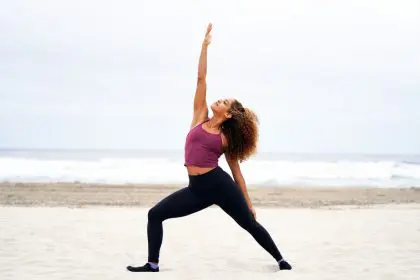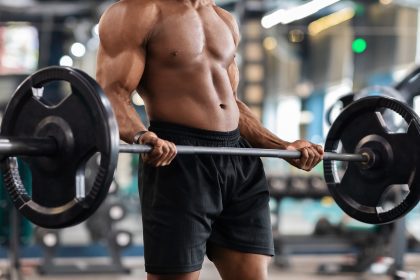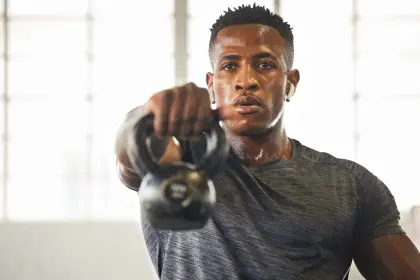The fitness industry has long catered to younger demographics with intense, transformation-focused programming that often proves unsustainable for midlife bodies. However, a significant shift is occurring as fitness professionals recognize the growing market of exercisers over 40 seeking effective, sustainable approaches that acknowledge physical changes while delivering meaningful results.
Recent fitness participation data reveals that adults over 40 now represent the fastest-growing demographic in multiple exercise categories. This surge has prompted the development of specialized programming that addresses the specific physiological realities of aging bodies while maintaining the motivational elements that drive consistent participation.
Strength training reimagined for midlife bodies
Strength training has emerged as the cornerstone of effective fitness after 40, with research consistently demonstrating its unparalleled benefits for metabolic health, bone density, and functional longevity. However, the approaches gaining traction differ significantly from traditional bodybuilding or power-focused programs.
Progressive resistance training using moderate weights with higher repetition ranges shows particular staying power among midlife exercisers. This approach emphasizes time under tension rather than maximum load, reducing joint stress while effectively stimulating muscle preservation. Programs featuring 2-3 weekly sessions with 8-12 exercises performed in the 10-15 repetition range allow adequate recovery while still producing meaningful strength gains and metabolic benefits.
Recovery-centered programming has similarly gained traction, with schedules built around the physiological reality that muscle recovery periods typically extend with age. The most sustainable programs incorporate micro-loading, incremental weight increases of just 1-2.5 pounds, allowing continuous progress without overtaxing recovery capacity. This approach acknowledges the marathon-not-sprint reality of midlife fitness, creating sustainable progressions that accommodate the body’s changing capabilities.
The focus on functional movement patterns rather than isolated muscle development represents another significant shift. Programs emphasizing compound movements that mirror daily activities, squatting, hinging, pushing, pulling, and carrying, create direct carryover to life quality. Participants report higher adherence to these functional approaches, citing tangible improvements in everyday activities as more motivating than aesthetic changes alone.
Interval training adapted for sustainable intensity
High-intensity interval training (HIIT) has been modified significantly for the over-40 demographic, with emerging formats emphasizing appropriate intensity without the joint impact or recovery demands of traditional approaches.
The development of variable-intensity interval training (VIIT) represents a particularly successful adaptation. These formats alternate between high, moderate, and low-intensity intervals rather than simply work and rest periods. The resulting workouts provide metabolic stimulus while reducing stress hormone production and recovery demands. Participants report significantly higher sustainability with these modified approaches compared to traditional HIIT formats.
Heart rate-based intensity management has similarly gained traction, with programs using personalized heart rate zones rather than standardized work intervals. This approach accounts for individual recovery capacity and cardiovascular health, allowing appropriate intensity scaling. Technologies that provide real-time feedback help participants find their personal “sweet spot” between effective stimulus and excessive stress.
Impact management within interval formats shows particular importance for long-term adherence. Programs incorporating fluid-based equipment (rowing, swimming, skiing ergometers), suspension training, and controlled plyometrics deliver intensity without the joint stress of traditional jumping movements. These formats allow intensity without impact, addressing a primary barrier to sustained participation for many midlife exercisers.
Flexibility and mobility programming moves mainstream
Perhaps the most significant shift in midlife fitness involves the elevation of flexibility and mobility work from occasional supplement to essential practice. What was once considered optional “stretching time” has evolved into sophisticated programming addressing the specific mobility challenges that emerge with age.
Targeted mobility routines focusing on the ankles, hips, thoracic spine, and shoulders, areas particularly prone to age-related restriction, have proven especially effective for sustained participation. These brief but frequent interventions, often performed daily for 5-15 minutes, prevent the gradual mobility losses that eventually interfere with exercise performance and daily function.
Dynamic movement preparation has replaced static stretching in most successful programs, with sequences that gradually increase range of motion through active movement rather than passive holding. These approaches simultaneously address mobility, coordination, and body awareness, creating comprehensive preparation for subsequent activity while reducing injury risk.
Neurological training elements focusing on balance, coordination, and proprioception have similarly moved from specialized applications to mainstream programming. Simple practices like unshod training, single-leg exercises, and hand-eye coordination drills maintain neural pathways that naturally diminish with age but respond remarkably well to consistent stimulation.
Community-based accountability systems
Beyond specific exercise modalities, the social structures supporting fitness have evolved to address the unique motivation and accountability needs of midlife exercisers.
Age-affinity training groups have demonstrated remarkable retention rates, with participants citing the psychological safety of exercising alongside peers navigating similar physical changes. These communities normalize the modifications often necessary in midlife while celebrating achievements contextually appropriate for aging bodies.
Coach-supported group training formats, smaller than typical fitness classes but more affordable than one-on-one training, have found particular resonance. These models, typically involving 4-8 participants working with a coach, provide personalized guidance and modification within a supportive community context. The resulting blend of customization and connection addresses both physiological and psychological sustainability factors.
Virtual-physical hybrid communities developed during pandemic restrictions have created unexpected sustainability benefits. These models combine in-person sessions with virtual accountability, extending support beyond scheduled workout times. The resulting continuous engagement helps participants navigate the life disruptions, travel, family obligations, illness, that previously derailed fitness efforts.
Technology that supports rather than measures
Technology utilization shows significant evolution in successful midlife fitness approaches, with tools focused on process support rather than performance measurement gaining particular traction.
Recovery tracking technologies have replaced step counters and calorie calculators as the most valued tools. Applications monitoring sleep quality, heart rate variability, and readiness scores help participants make informed decisions about workout intensity and volume, preventing the overtraining cycles that frequently undermine consistency.
Form-focused technologies utilizing camera analysis and motion sensors provide real-time feedback on movement quality, addressing the form deterioration that often occurs imperceptibly and eventually leads to injury. These systems create objective improvement metrics beyond weights lifted or distances covered, sustaining motivation through quality-based progress.
Mindset-supporting applications incorporating meditation, visualization, and cognitive reframing have demonstrated surprising impact on exercise adherence. These tools address the psychological barriers, stress, negative self-talk, unrealistic expectations, that often derail midlife fitness efforts when physical progress naturally slows.
Integrated lifestyle approaches replacing isolated workouts
Perhaps the most fundamental shift in sustainable midlife fitness involves moving beyond isolated workout sessions to integrated lifestyle approaches that acknowledge the interconnected nature of physical activity, recovery, nutrition, and stress management.
Sleep prioritization represents a particularly significant evolution, with successful programs actively emphasizing sleep quality alongside exercise performance. This approach recognizes that exercise benefits compound with adequate recovery while diminishing with sleep deficit. Some programs have even implemented “sleep first” protocols that adjust workout intensity based on recovery metrics rather than predetermined schedules.
Stress-responsive programming similarly acknowledges the cumulative impact of all stressors, not just exercise, on recovery capacity. These approaches incorporate regular assessment of overall life stress, with workout intensity and volume adjusted accordingly. The resulting flexibility prevents the common cycle of adding exercise stress to already-taxed systems, eventually forcing complete cessation due to illness or injury.
Nutrition guidance focusing on protein adequacy and strategic carbohydrate timing rather than caloric restriction has demonstrated particular effectiveness. These approaches support the increased protein requirements of aging muscles while providing adequate energy for performance and recovery, creating sustainable eating patterns rather than restrictive diets.
The fitness industry’s evolution toward sustainable midlife approaches represents a significant maturation beyond the transformation-focused, high-intensity paradigms that dominated previous decades. These emerging trends acknowledge the realities of aging physiology while delivering meaningful health and performance improvements through sustainable practices.
For adults navigating fitness after forty, the key to lasting results lies not in finding the perfect exercise program but in developing systems that support consistent implementation through life’s inevitable fluctuations. The approaches gaining traction combine physiological appropriateness with psychological sustainability, creating paths to lifelong fitness that accommodate the changing capabilities and priorities of midlife and beyond.












